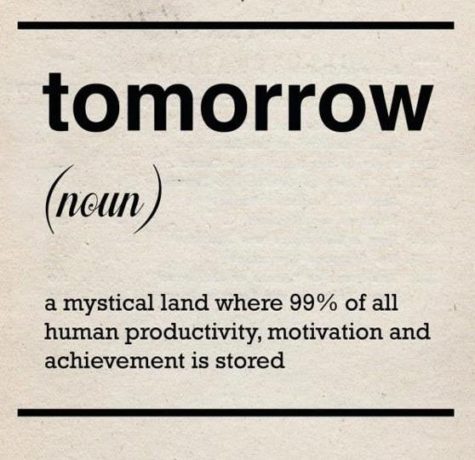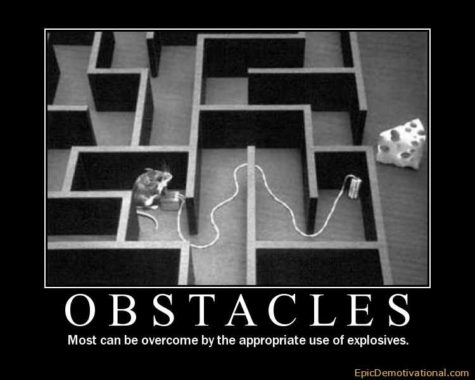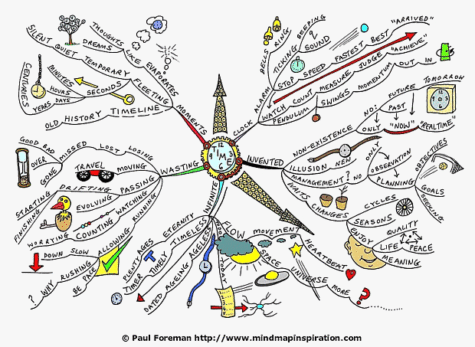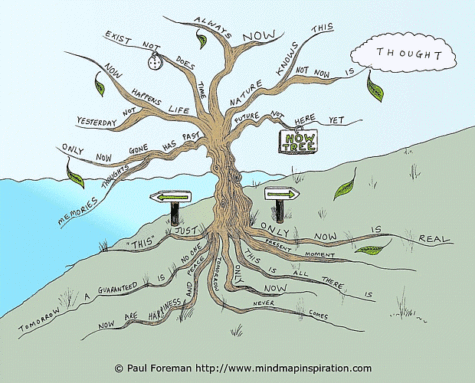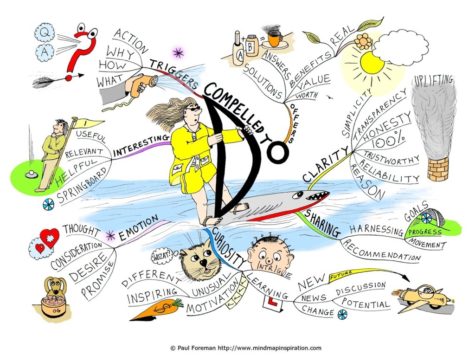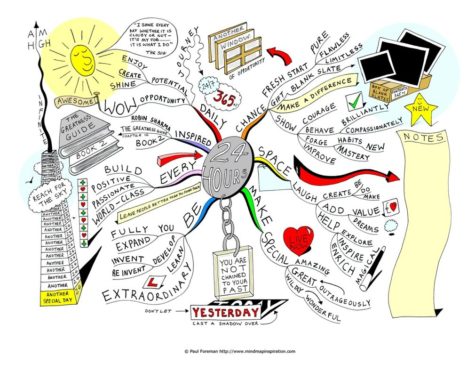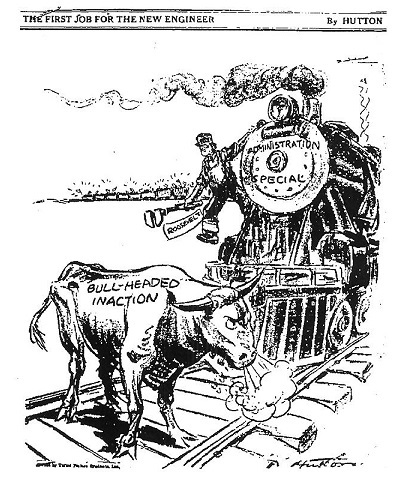Monthly Archives: April 2017
Did We Do Something?
And now that we’re done with our 30 days of doing. It’s time to talk about how well did we do? Did you accomplish your goal? If not, why not. If so, do you have anything to share that you think might be helpful to someone else? What was the most helpful to you? Least helpful? Are you glad it’s finally over? Wish you had more time? If you could do it all over again, what would you do differently?
I’m sure I”m not the only one who would love to hear your stories of success or failure, road blocks and smooth sailing, ideas, insights, words of wisdom and anything else that you’d like to share.
And here’s a little collection of Steam Train pictures to enjoy while we put this project to bed:
Down To The Wire
Random Thoughts on Obstacles
So, the first time I saw this I thought, “OK, that’s a fail.” However, today, I realized something interesting and important about this little gif. It stops too soon. That little guy just needs to get back up, reach over that rock, pick up his skateboard, and keep on keeping on. Voila! Obstacle Overcome!
This is also true. Sometimes you need an earth shaking maybe even life shattering event to propel you out of a situation in which you feel irretrievably stuck. Of course, something like that is scary and must be approached with ultimate caution. Notice the mouse is hiding “safely” behind a wall before he triggers the event.
For some people, obstacles are a great motivation for creative thought. Movers and shakers love obstacles because overcoming them is what they do best. There’s a lot to be said for this quality. To welcome problems… see the challenge and get excited about resolving it. A life that is too easy is usually pretty boring and possibly meaningless. On the other hand.. too many problems for breakfast can be like too much bacon – which we all know is not good.
Some obstacles aren’t really obstacles at all. We imagine them to be limitations and impossibilities. We create an obstruction in our imagination and think it’s real, and allow ourselves to come to a dead stop as a result.
I love this picture so much.
Making the best of a bad situation.
Wow!
And then there’s always the “keep on keeping on” method of overcoming impossible situations. Maybe you just need a little bit of help and a whole lot of “I shall not fail” determination. You’ve got to admit, these two ladies (climbing the Grand Canyon) are pretty impressive!
Some goals, no matter how interesting, how elaborate, or how cool are simply impossible. This little engine for example… I love it! It’s a lovely steampunk fantasy and it’s not going anywhere. Well… it might roll along for about 6 inches or so before it derails…
And then there’s this… the occasional disaster! All that work, that energy and enthusiasm, the I think I can’s, the motivational speeches, how to’s, and road maps to success… all of it lost in a moment. Maybe it was poor planning, lack of support, or a simple mistake, something happens and the whole thing goes up in flames. It happens, and lucky for us, our little “Engines That Could” are not real trains!
Giving up is always an option, but are you sure you really want to do that?
Isn’t there always a little spark of hope?
A light at the end of the tunnel?
I like to think so.
Mind Maps
I found a wonderful series of “mind maps” from Mind Map Inspiration. I thought these might be helpful to those of us who are finding ourselves lost in the wilderness of not getting stuff done that we said we would do, that we wanted to do, that we intended to do, that we wish we would do…
Parkinson’s Law
Work expands to fill the time allotted.
This proverb was coined by the twentieth-century British scholar C. Northcote Parkinson, known as Parkinson’s Law, it points out that people usually take all the time allotted (and frequently more) to accomplish any task.
The total effort that would occupy a busy man for three minutes all told may in this fashion leave another person prostrate after a day of doubt, anxiety, and toil.
Originally, Parkinson’s law was a reference to the self-satisfying uncontrolled growth of the bureaucratic apparatus in an organization. Nowadays Parkinson’s law is usually condensed to saying work expands to the time allowed and is applied to individuals as well as a burgeoning bureaucracies. Parkinson discusses this interpretation in his opening paragraph but then limits his attention to organizations.
This adage, written in 1955, captured a feeling both modern and timeless and came to be known as Parkinson’s Law. It spawned a best-selling 1958 book and has for decades inspired life-hackers and self-help gurus aiming to vanquish the human tendency toward anxiety-producing, productivity-squelching procrastination.
Variations on the theme:
- If you wait until the last minute, it only takes a minute to do.
- In ten hours a day you have time to fall twice as far behind your commitments as in five hours a day.
- A task will swell in (perceived) importance and complexity in relation to the time allotted for its completion.
- The amount of time that one has to perform a task is the amount of time it will take to complete the task.
Interestingly, the reverse is not true.
The solution? Set urgent deadlines, program your stopwatches, and stick to the program. No dillydallying, and no toiling over inconsequential details. Mustering mental discipline is, of course, challenging, especially now that smartphones and e-mail make it easy to second-guess, edit, and retouch work from anywhere at any hour.
The Law of Delay
“Delay is the deadliest form of denial.”
~ C. Northcote Parkinson
From: The Times (London), 15 September 1966,
“Parkinson’s Law of Delay” by C. Northcote Parkinson
There is nothing static in our changing world and recent research has tended to show that the Abominable No-man is being replaced by the Prohibitive Procrastinator. Instead of saying “No” the Prohibitive Procrastinator says “In due course,” foreshadowing Negation by Delay.
The theory of Negation by Delay depends upon establishing a rough idea of what amount of delay will equal negation. If we suppose that a drowning man calls for help, evoking the reply “In due course,” a judicious pause of five minutes may constitute for all practical purposes, a negative response. Why? Because the delay is greater than the non swimmer’s expectation of life.
The same principle holds good in a case at law. Delays are thus deliberately designed as a form of denial and are extended to cover the life expectation of the person whose proposal is being pigeon-holed. Where the urgent matter requires remedial legislation, delay takes on a new dimension. The judicious pause will correspond, nevertheless, to the life expectation of the man from whom the proposal originates. DELAY IS THE DEADLIEST FORM OF DENIAL.’
How Can I Recharge My Depleted Motivation?
From Life Hacker, we have this nice little article about how to recharge when your motivation battery is depleted.
Dear Lifehacker,
Lately I’ve been completely unmotivated to do anything. Getting things done at work is a challenge, and it’s even worse at home. My apartment is becoming a mess, I never cook anymore, and I’ve been unable to keep up a healthy diet. I don’t feel depressed or all that unhappy—just very unmotivated. Is there anything I can do to recharge?
Sincerely,
Dangerously Demotivated
Dear DD,
A lack of motivation is a difficult problem because there are likely many factors contributing to it, but the simplest way to get your motivation back is to do something you want to do. The problem with that is when you’re low on the necessary energy and willpower needed to start a particular task, your motivation is generally re-routed to indulge in something effortless like food or entertainment. Overindulgence, as you’ve likely noticed, only serves to make the problem worse. So what do you do? First, we need to pinpoint what’s causing your lack of motivation and then we need to find ways you can trick yourself into getting it back.
Social Rejection Can Kill Your Motivation
Motivation can be depleted by a number of sources. A recent post by David McRaney, author of the human behavior blog and book You Are Not So Smart, discusses many of them. One study asked a group of students to meet each other and then write down who they’d like to work with on a piece of paper. The researchers conducting the study ignored their choices and told some that they were chosen and others that nobody wanted them. Unsurprisingly, the rejected were unhappy, but here’s how it changed their behavior and why:
The researchers in the “no one chose you” study proposed that since self-regulation is required to be prosocial, you expect some sort of reward for regulating your behavior. People in the unwanted group felt the sting of ostracism, and that reframed their self-regulation as being wasteful. It was as if they thought, “Why play by the rules if no one cares?” It poked a hole in their willpower fuel tanks, and when they sat in front of the cookies they couldn’t control their impulses as well as the others. Other studies show when you feel ostracized and unwanted, you can’t solve puzzles as well, you become less likely to cooperate, less motivated to work, more likely to drink and smoke and do other self-destructive things. Rejection obliterates self-control, and thus it seems it’s one of the many avenues toward a state of ego depletion.
When you get rejected, you lose your desire to try because it seems as though nobody would care either way. It’s unlikely this is the case, as one instance of rejection from one or a few people doesn’t encompass the opinion of every person in every situation, but it feels that way and so that’s how you react.
Neglecting Your Physical Needs Makes It Hard to Do Anything
Getting rejected in even a simple way is not the only way to destroy your motivation to do much of anything. Similar effects are possible when you’re not eating:
A study published in 2010 conducted by Jonathan Leval, Shai Danziger, and Liora Avniam-Pesso of of Columbia and Ben-Guron Universities looked at 1,112 judicial ruling over the course of 10 months concerning prisoner paroles. They found that right after breakfast and lunch, your chances of getting paroled were at their highest. On average, the judges granted parole to around 60 percent of prisoners right after the judge had eaten a meal. The rate of approval crept down after that. Right before a meal, the judges granted parole to about 20 percent of those appearing before them. The less glucose in judges’ bodies, the less willing they were to make the active choice of setting a person free and accepting the consequences and the more likely they were to go with the passive choice to put the fate of the prisoner off until a future date.
When leading a busy life, it can be very easy to skip breakfast and/or have a late lunch, then find ourselves in a position where it’s difficult to get much done because we’re lacking the necessary glucose to help us think properly. Even after you finally eat, you can end up with a headache from neglecting to do so for much of the day, which doesn’t really motivate you to do much other than lie down. Neglecting our physical needs can deplete our motivation to do much, so it’s important to keep track of that neglect so it can be corrected. One way you can do that is fill out this daily personal inventory form and see if there are any common trends in your days. If there are, recharging your motivation may be as simple as eating breakfast and getting enough water.
Making Too Many Decisions Exhausts Your Brain
One of the fastest ways to get you lying on the couch with a tub of ice cream, however, is to put you in a situation where you have to make several big decisions. John Tierny, in an article for the New York Times, discusses the problem:
Decision fatigue helps explain why ordinarily sensible people get angry at colleagues and families, splurge on clothes, buy junk food at the supermarket and can’t resist the dealer’s offer to rustproof their new car. No matter how rational and high-minded you try to be, you can’t make decision after decision without paying a biological price. It’s different from ordinary physical fatigue – you’re not consciously aware of being tired – but you’re low on mental energy. The more choices you make throughout the day, the harder each one becomes for your brain, and eventually it looks for shortcuts.
This doesn’t just come down to large decisions at work. If you have to make a number of small decisions you can slowly cause the same fatigue. If you don’t manage the number of choices you make each day, whether small or large, you’ll find yourself repeatedly indulging.
How to Regain Your Motivation
Regaining your motivation involves a combination of ccombatingthe sources of its depletion and tricking yourself into taking the first step. In the case of social rejection, you’re going to feel bad and not want to do much at all, but you need to confront the problem. Perhaps there’s something you’re doing that’s causing the rejection, or perhaps you’re just interacting with unpleasant people. Talk to the person (or people) who rejected you and find out why. Look at ways you can correct the problem if you’re the cause, or try to work through it with the other person if they are. If it can’t be solved, consider ways you can remove yourself from the situation because constant unwarranted social rejection isn’t healthy for anybody.
If you’re simply not taking care of your body, the solution to that problem is pretty obvious. As previously mentioned, you first have to pinpoint the issue and you can do that easily with a daily personal inventory. Figure out what you’re neglecting in your physical needs and make it your number one priority to change that.
When it comes to decision making, it can often be difficult to manage every choice you’ll have to make because you don’t always know when you’ll have to make them. One way to get around this problem is to create a to do list of decisions rather than tasks so you’ll know what needs to be decided and when. Split them up, make sure you don’t have to much to decide in one day, and leave room for unknown decisions you may encounter as the day goes on. Don’t forget to include small things like grocery shopping, as you can get stressed out all the same when you’re trying to figure out what should and shouldn’t end up in your refrigerator.
Finally, figure out something you really want to do. This may be on the boring side and mean you want to clean your apartment, or something more exciting like make a game. Whatever it may be, take a very tiny first step that only requires about five minutes of your time. On the next day, take a slightly smaller step. Work your way up by accomplishing just a little bit more each time. When you start to see your accomplishments and how little effort they take, you’ll have an easier time making progress. After all, just getting started is everything
Hopefully these tips will help you regain your motivation. If you combat the causes and take it slow, you should be back to form in no time.
Love,
Lifehacker
If He Can – I Can
In February 2013, Faujah Sing became the oldest person to run a marathon at age 101, completing a 6.25 kilometer race in Hong Kong in one hour, 32 minutes, and 28 seconds. Astonishingly, Sing only came to racing at age 89 after losing his wife and son, but has since completed eight competitive races.
Here’s a video:
His story is as follows:
Fauja Singh was born on April 1, 1911, in the village of Beas Pind, Punjab. Young Fauja was scrawny and sick as a child, often bullied by other children who called him “danda”, Punjabi for “as thin as a stick.” Fauja did not develop the ability to walk until he was five years old. His legs were thin and weak, and he could hardly walk long distances.
He never went to school – instead, Fauja became a farmhand. Initially he would assist with odd chores like minding the cattle. But later, he began to help with tilling of the land and growing staple crops like wheat and maize.
Working hard in the fields, Fauja grew into a strapping lad, tall and handsome, his traumatic early years as a sickly thin child quickly forgotten. He’d now reached a marriageable age and his parents soon found him a suitable bride, Gian Kaur.
Fauja and Gian quickly settled into a domestic routine. Fauja worked on the farm and wife Gian Kaur managed the house. Over the years, they had six children, three boys and three girls.
The proud parents watched as the children grew up, completed their education and began looking for jobs to begin their careers. Also, now came the responsibility of getting them married. One by one the children married and/or found jobs abroad in Canada and England and left Punjab. All except one – Kuldip and his wife decided to stay back and help Fauja and Gian with the farm.
The years rolled by.
In 1992, Fauja’s wife Gian Kaur passed away. Fauja shed many tears but accepted his fate and carried on. He was 81 now, he’d come a long way.
Then, in 1994, tragedy struck again. His son Kuldip, who had been taking care of his parents all this time, was killed right in front of Fauja’s eyes in a construction accident. Fauja’s world turned upside down. His grief knew no bounds and life became empty for him thereon.
Now almost 83 and unable to bear the loss of his beloved wife and son, each day became a burden for Fauja. It was then that his children, who were by now well settled abroad, decided to bring their father to stay with them. Fauja eventually moved to London to stay with his son Sukhjinder and his family; this was in the late 1990s.
Though happy to be with his son, Fauja was still grieving inside; he just couldn’t come to terms with the loss of Kuldip, and his mind was still in India.
However, like many others his age, Fauja too may have soon come to turns with this tragedy, spent his old age with his children and died a peaceful death. But life was about to take a glorious turn for this octogenarian.
While watching television one evening, Fauja heard the anchor of a show inviting people to participate in the upcoming London marathon.
This woke Fauja up from his slumber; he was back to his childhood days when he used to run errands for the family, tearing up and down the village streets. Well, that was almost six decades or so ago; he was now 89, not a youngster by any means. Nevertheless, Fauja, who had by now taken tentative steps out of the house to enjoy an early morning jog with members of his community, decided he’d give the London marathon a try.
He, of course, had absolutely no clue what a marathon was.
Asking around, he was introduced to Harmander Singh, an athletic coach and a marathon runner himself.
Fauja explained to Harmander that he wanted to participate in the upcoming London marathon, hardly a couple of months away. Harmander is said to have shaken his head in disbelief. Fauja wouldn’t relent, he had made up his mind and nothing was going to change it. Eventually, Harmander agreed to coach Fauja.
Here is an oft-repeated anecdote from the first day of training: it is said that Fauja turned up for training in a three-piece suit. Harmander was taken aback and had to chide Fauja that this attire was not exactly suitable for running a marathon.
With coach Harmander guiding him, Fauja finally began his training in right earnest. At long last he had a new goal in life and he began to come out of his shell.
On race day of the 2000 London marathon, Fauja was one amongst the teeming tens of thousands who had turned up from around the world to participate in this prestigious event.
The race began and Fauja ran alongside his coach, Harmander Singh. Six hours and 54 minutes later, Fauja crossed the finish line – he had run 26 miles and 365 yards. At age 89, he was a marathoner, having just completed his first marathon race, the 2000 London marathon.
When asked how he managed to run the 26-mile marathon, Fauja replied: “The first 20 miles are not difficult. As for the last six miles, I run while talking to God.”
Fauja entered the London marathon again in 2001, but this time with a record at stake. He needed to beat 7 hours 52 minutes to be the fastest marathoner alive over age 90. He broke the record by 57 minutes!
When he turned 92, Fauja successfully competed in three marathons in the space of six and a half months, another remarkable record.
Fauja Singh would eventually become the oldest marathon runner, having participated in eight marathon races from 2000 to 2011.
His personal best would be achieved in the 2003 Toronto marathon in Canada, where he clocked an astonishing 5 hours 40 minutes in the 42.195 km race – a stunning record for a 92-year-old runner.
When asked about the secret of his running prowess and his longevity, Singh has said there is no secret formula: “My diet is simple — phulka, dal, green vegetables, yoghurt and milk. I take lots of water and tea with ginger. I go to bed early, taking the name of my rabba (God) as I don’t want all those negative thoughts crossing my mind.”
Source: The Better India
Walking On Water
I found this article at Mark and Angel, and it intrigued me quite a bit. I’m not sure that I agree with him, and I’m not even sure if it’s a true story or not. It did, however get me thinking about how my belief system affects my outcomes. So, here it is:
This past Sunday I was relaxing at the water’s edge of a local beach when a young boy ran full speed right by me and into the shallow surf. He continuously hopped up and down as he was running forward, kicking his little legs in the air and across the surface of the water before inevitably falling face-first into the waves. He got back up and repeated this act several times, each time with more determination than the previous attempt. It became obvious that he was trying to run across the surface of the water. I couldn’t help but to laugh. His combined levels of determination and exertion were priceless.
After several attempts, he noticed my laughter and walked over to me. “What’s so funny?” he asked.
“You remind me of me, and it makes me smile.” I said.
“Do you know how to walk on water?” he asked. “Like a superhero?”
“Well, I think I can help you out.” I said. “Let me give you a few pointers.”
Curious, the boy sat down on the sand next to me. His mother scurried over, worried… but I reassured her that her son wasn’t bothering me. Relieved, perhaps, to have her son sitting safely on the sand instead of flying face-first through the air, she went back to her beach chair 20 feet away and continued a conversation with another lady.
“So, you want to walk on water, eh?” I asked. He nodded his head anxiously.
A Rough Summary of What I Told Him
- Make sure you were born to walk on water.
You must follow your heart, and be who you were born to be. Some of us were born to be musicians… to communicate intricate thoughts and rousing feelings with the strings of a guitar. Some of us were born to be poets… to touch people’s hearts with exquisite prose. Some of us were born to be entrepreneurs… to create growth and opportunity where others saw rubbish. And still, some of us were born to walk on water… to invent the capability of doing so. If you’re going to walk on water, you better feel it in every fiber of your being. You better be born to do it!
- Decide that nothing can stop you.
Being born to walk on water isn’t enough by itself. We must each decide to accept our calling. Unfortunately, most of us make excuses instead. “But I might drown trying,” we say. Or, “But I have a family to think about first.” Walking on water, or doing anything that hasn’t been done before, requires absolute, unconditional dedication. The only person who can control your level of dedication is you. If you’re serious about walking on water, you must decide that nothing… not gravity, not a group of naysayers, NOTHING… can stop you!
- Work on it for real.
While many of us decide at some point during the course of our lives that we want to answer our calling… to accomplish our own version of walking on water, only an astute few of us actually work on it. By “working on it”, I mean truly devoting oneself to the end result. The rest of us never act on our decision. Or, at best, we pretend to act on it by putting forth an uninspired, half-ass effort. But to truly walk on water, you’ll have to study physics, rheology, hydrophobic substances, etc… and then you’ll have to define and redefine next-generation theories and complex hypotheses, which must be tested relentlessly. When the tests fail, you must be ready to edit your theories and test them again. This kind of work, the real kind, is precisely what enables us to make the impossible possible.
- Let the whole world know what you’re up to.
When you’re trying to walk on water, or do anything that nobody else has done before, life can get lonely pretty quickly. To keep your motivation thriving, it’s important to let others know that you’re attempting to defeat the formerly impossible. Don’t be shy! Let the whole world know that you’re trying to walk on water. No doubt, it’ll place a bit of extra pressure on your back, and you’ll almost certainly hear some laughter in the crowd. But this kind of pressure fuels motivation, which is exactly what you’ll need to accomplish such a colossal undertaking. And when you finally do succeed, the last bit of laughter heard will be your own.
- Value the people who value your ambitions.
When most people hear about your “mission impossible” aspirations, their natural reaction may be to roll their eyes, call you crazy, and tell you to quit being foolish. But fortunately, the world is also inhabited by pioneers and believers who see the value in your dreams. These people understand that achieving the formerly impossible is one of the greatest gifts human beings possess. They’ll likely give you tips, bits of assistance, and the extra push you need to succeed. These are extraordinary people, and you’ll want to surround yourself with them, because they will ultimately assist you over the hurdles and across the surface of the water. Think of them as an influential, personal support team. Without them, walking on water will be a far more difficult feat, if not completely impossible.
- Ignore the negative naysayers.
No matter how much progress you make, there will always be the people who insist that walking on water is impossible, simply because it hasn’t been done before. Or they may incessantly suggest that the idea as a whole is utterly ridiculous because nobody really cares about walking on water anyways. When you come across these people, don’t try to reason with them. Instead, forget that they exist. They will only waste your time and energy.
- Prepare yourself for the pain.
Even though you’re no longer mindlessly running face-first into the oncoming ocean surf, but instead forming complex theories based on the studies of rheology and fluid viscosity, it doesn’t mean you won’t experience your fair share of pain. You’re in the business of walking on water, of doing something that has never been done before. You’ll likely get a waterlogged, lungful of water on a regular basis. But the pain will seem like a small price to pay when you become the first person to jog across the rapids of the Mississippi.
- Enjoy the pain of your greatest challenge.
Superheroes aren’t real. In real life nobody has ever walked on water. But lots of people have achieved formerly impossible feats, and continue to enjoy the possibilities of new challenges. These people will all tell you there’s nothing more gratifying than the thrill of your greatest challenge. The inherent pains along the way are simply mile markers on your trip to the finish line. When you finally do finish, you may actually find yourself missing the daily grind. Ultimately, you’ll realize that pleasure and pain can be one and the same.
- Never give up! Never quit!
The reason nobody has walked on water isn’t because people haven’t tried. Remember, you just tried several times in a row, and I’m sure many others have too. The reason nobody has succeeded is, simply, that within the scope of modern science and physics, it’s currently impossible. But this doesn’t mean that with your help it won’t become possible in the future. If you were born to do it and truly dedicate yourself to the end result, anything, including walking on water, is entirely possible!
Just a Chance
When we were done talking, the young boy got up and ran back over to his mother. He pointed over to me and I smiled and waved back. Then he said to her, “Mommy, mommy! That guy just taught me how to walk on water!”
A few moments later she walked over to scold me for supposedly giving out reckless advice. She told me I was giving her son a false sense of hope. I told her all I was giving him was a chance.
I Can Do Anything
I’m pretty sure we could all use some of this little girl’s energy, enthusiasm, and excitement about life!
Here’s a little more about this video:
Jessica has a day where she’s feeling … really good about her life.
++++FAQ for this video ++++
Q: How old was Jess at the time of the video?
A: She’d turned 4 about 6 weeks before the video was shot.
Q: How old is she now?
A: Depends on when you’re reading this, but she was born in late October of 1997.
Q: What does she say at the beginning?
A: Though some claim they hear the word “assert” – as in assertive – she’s actually saying I can be a “shark” – but it sounds like “sark” because she was incapable of making “sh” sounds at this time.
Q: Are you sure she’s not saying “I can be a SARK?” Her daily affirmations are consistent with the teachings of the author SARK.
A: This is an interesting coincidence, but a coincidence nonetheless.
Q: Does she say, “I like my ‘elephants’?”
A: More than one person has thought that, but she’s actually saying I like my “Allisons.” Allison is her aunt.
Q: Does Jess have more than one mom? She says I like my “moms.”
A: No, she just has one mom and one dad (me.) For some reason she was “pluralizing” several things in her “like list.” That’s why she says “Allisons” and “cousins” (she only has one.)
Q: What does she say at the 22 second mark?
A: I really don’t know, though I do have a theory now: this video was taken right around Christmas-time, and it ALMOST sounds like she’s saying “I like my presents.” So that’s what I think it is – but I could be wrong.
Q: Did she do this affirmation every day?
A. Yes, until the age of seven. … Just kidding. 🙂 I think this was a day when the video camera was out, so there was an element of “putting on a show” – but Jessica still meant every word. Though she may have been hamming it up a bit, she was sincere in the things she was saying.
Q: Did you teach her that she could “anything better than anyone?” Isn’t that a little wrong?
A: Some people have had an issue with her saying this, but it’s not something that we taught her. And I’ve never seen her (even all these years later) say anything like this to anyone. I suspect it was probably the expression of some inner confidence that she just happened to express outwardly on this one particular day.
- Radical Self Care Project Overview by shirleytwofeathers - No Comment
- Radical Self Care Image Gallery by shirleytwofeathers - No Comment
- It’s A Wrap by shirleytwofeathers - 3 Comments
- Something To Consider by shirleytwofeathers - 1 Comment
- Nurturing Your Precious Self by shirleytwofeathers - 3 Comments
me: Make Your Own Violet Fire
Abdulrahman: Money Chant – Very Fast
Shirley Twofeathers: It’s A Wrap
Daniel Knirs: It’s A Wrap
Shirley Twofeathers: It’s A Wrap






